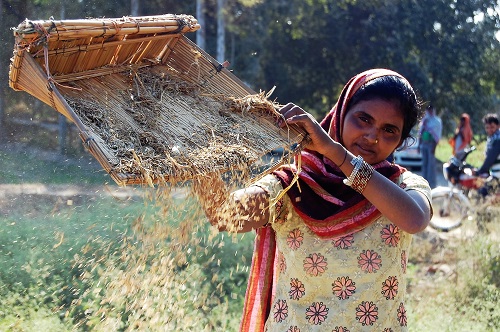
EL BATAN, Mexico (CIMMYT) – Developing cereal crops that can withstand the effects of climate change will require global, integrated efforts across crops and disciplines, according to a recent research paper published in the journal “Global Food Security.”
The authors of “An integrated approach to maintaining cereal productivity under climate change” argue that cropping systems could become more resilient in the face of climate change through better coordination. Needs include characterizing target agro-ecosystems, standardization of experimental protocols, comparative biology across cereals (and possibly other crops) and data sharing.
Better integration of research effort across the major cereal crops – including wheat, rice, maize, pearl millet and sorghum – is expected to boost productivity under heat and drought stress, thus helping to increase food security for people in less developed countries, many of which will be severely affected by climate change.
“Most of the big challenges in crop improvement are transnational, therefore a better globally integrated research effort is a triple win scenario,” according to Matthew Reynolds, head of wheat physiology at the International Maize and Wheat Improvement Center (CIMMYT), and lead author of the paper. “It’s more efficient since duplication of effort is reduced, it’s synergistic since we learn simultaneously from multiple crops and environments [or cropping systems], and it’s faster to achieve impacts because outputs are disseminated more broadly.”
The paper itself is the result of a workshop held in New Delhi in November 2013, which was the first of its kind to bring together researchers from leading universities, CGIAR agricultural research centers, national agricultural research systems and the private sector – working across the five crops – to discuss areas of common interest and potential collaboration.
Wheat, rice, maize, pearl millet, and sorghum make up nearly 45 percent of calories consumed per capita worldwide and about 55 percent in least developed countries, according to the Food and Agricultural Organization of the United Nations. Cereal production is under threat from climate change, which subjects crops to heat and drought stress. Diminishing water supplies, increasing populations, urbanization, shifting diets and increasing demand for fodder and fuel is also putting pressure on cereal production. Taking all these factors into account, researchers project that yield growth rates of 1.2 percent to – 1.7 percent will be required to meet global demand and reduce malnutrition.
The authors of the paper, including representatives from the U.S. Agency for International Development and the Bill & Melinda Gates Foundation, identified priority traits for heat and drought tolerance across the cereal crops, and also called for more effective collaborations so that these traits can be modelled, tested at common phenotyping platforms and the resulting data shared with other researchers worldwide as global public goods.
“This paper has provided a baseline about what needs to be done,” said O.P. Yadav, director of the Central Arid Zone Research Institute at the Indian Council of Agricultural Research. “It has also shown what is achievable, once various institutes decide to work together with a common goal and become collaborative stakeholders in increasing the resilience of diverse cropping systems.”
 Climate adaptation and mitigation
Climate adaptation and mitigation 
